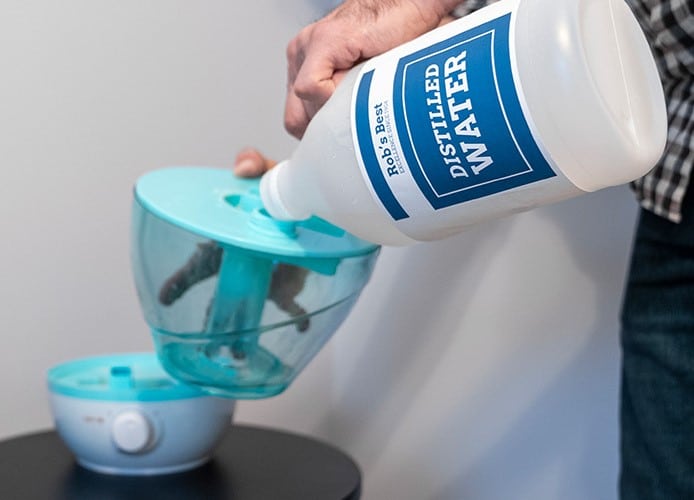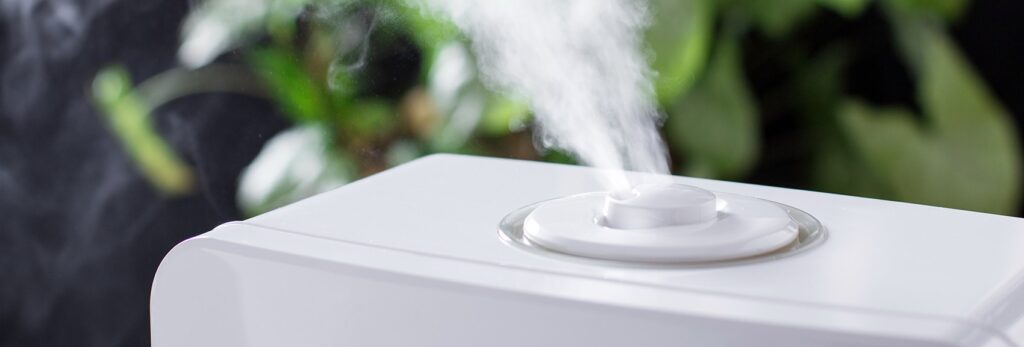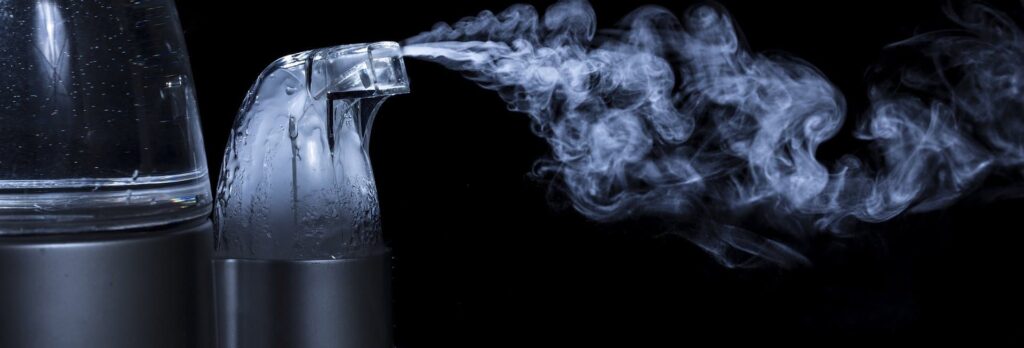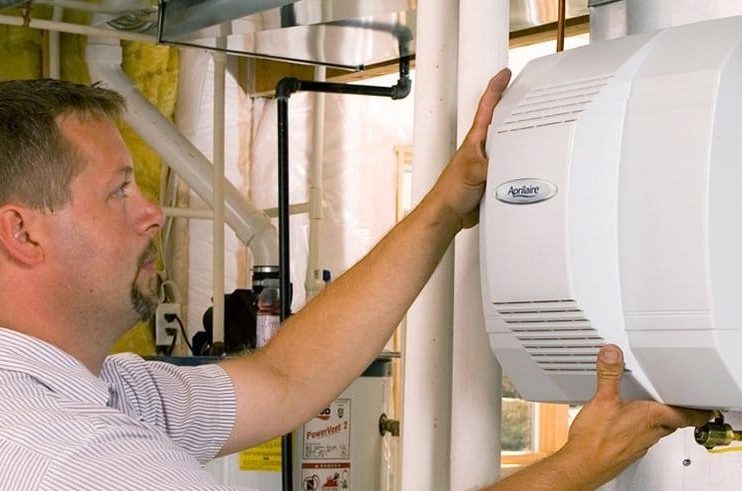Humidification systems are the most effective for remedying dryness Trusted Source Humidifiers and Health: Uses, Types & Risks Humidifier therapy adds moisture to the air to prevent dryness that can cause irritation. Humidifiers can be particularly effective for treating dry skin. www.healthline.com of the skin, lips, throats, and nose while inside the house. In addition to the use of air saturators and the technique of leaving a water bowl in the room for evaporation, air humidifiers are a much healthier solution as they also help purify the air we breathe.
Humidifiers are divided into two categories: warm mist humidifiers and cool mist humidifiers. Although both types of humidifiers are designed to perform the same role of increasing humidity levels in the air, they work very differently.
In this cool mist vs warm mist humidifier comparison article, we are going to discuss the pros and cons of both types so that you can decide which type of humidifier is best for you.
In winter, and particularly in modern homes equipped with air conditioning, the air humidifier has now become an essential device. Its main role is to regulate the ambient humidity level (hydrometry) of a room.
When temperatures drop, the heating operates at full speed, causing the indoor air to become very dry. The humidity level in a room can drop to 30%, while the ideal rate is between 40 and 60%. To make the air more pleasant for the body and to breathe in, the humidifier will kick in to distribute more humid air.
If you understand what an air humidifier does as a whole, it remains to be seen how exactly it works. There are two categories of humidifiers, a domestic version, and an industrial version. However, it is the first that will be of particular interest to us in this post.
The device aims to increase the humidity in a room through the evaporation of water. To do this, it must be equipped with a tank containing clean and drinkable water and preferably not previously treated. However, the contact surface between air and water must be maximum to be effective.
Humidification is also made possible by an antibacterial filter cassette. Once on, the humidifier will pass air through the filter, making it absorb as much water as possible naturally, preventing possible over-humidification.
The propelled air will thus be optimally humidified. But this air will also be free of dust and impurities. The impurities will remain at the bottom of the water tank, requiring a regular water change.
With better air quality, breathing problems or dry skin problems will decrease. Dry air makes the mucous membranes more sensitive. Air with good humidity will make the immune system less vulnerable to disease. Cases of bronchitis or flu will therefore be less frequent in this type of environment.
Good humidity will also improve the household’s quality of sleep, as too dry air tends to make us uncomfortable at night.
Finally, although health is the priority, also know that the use of the device will preserve the furniture and all that is wooden (floor, wall, ceilings, etc).
Some of the similarities between a cool-mist humidifier and a warm-mist humidifier are listed below:
Ideal for winter, the warm-mist humidifier emits warm humidity. It works as a humidifier and as a mild working heater.
For this type of device, the water in the tank is first brought to a boiling point to kill germs. This operation is possible thanks to electrode lamps. The vapor is then projected by ventilation. This type of humidifier is therefore filterless.
It is mostly used in winter to heat the ambient air. One has to be careful with these. They are not recommended in households with children, mainly because the water in the humidifier can reach a high boiling temperature and can be a danger for children.
The evaporative system allows you to vaporize a cool or warm mist thanks to a built-in motorized fan. The ventilation action on a water-soaked filter will project fine droplets of water into the air. These humidifiers are among the cheapest and the least energy-intensive since most have a power capacity of only 8 Watts. There are two types of evaporative humidifiers: cold and hot mist humidifiers.
On the other hand, the choice of consumers is increasingly focused on ultrasonic humidifiers which include new technological options. Its principle is based on the treatment of water by inaudible ultrasonic vibrations. The water is directed on a membrane and the frequency allows the destruction of the microbes. The water particles are then projected into the air. A very fine mist is obtained which is different from the vapor.
Ultrasonic humidifiers are capable of vaporizing a cool or slightly warm mist. They are the quietest humidification devices. However, their system does not remove lime present in the water. As with evaporative humidifiers, use distilled water or check if the device contains a descaling filter.
With cool-mist humidifiers, the water is sprayed cold, that is to say at room temperature. To avoid projecting microbes into the air, the water should be changed daily and as much as possible, humidifiers with washable filters should be preferred. With these, the impurities will accumulate on the water filter.
The cool-mist humidifier is a safe device. It is ideal for the children’s room and is offered at an affordable price. In summer and during heat waves, the cool-mist humidifier refreshes the air while helping to maintain an optimal humidity level.
According to most users, the most reliable and effective cool-mist humidifier is the Everlasting Comfort Cool Mist Humidifier. This filterless humidifier is ideal for the bedroom, has a 6-liter tank, and is whisper quiet.
Each type of humidifier is not for everyone. Both are recommended for different types of people and situations.
Cool mist humidifiers are the best for people suffering from dry skin problems and eczema. Warm mist humidifiers may aggravate the symptoms. The best dry skin humidifiers are usually cool humidifiers.
Cool-mist humidifiers help relieve cough. Warm-mist humidifiers don't provide significant help with cough Trusted Source Warm-mist versus cool-mist humidifier: Which is better for a cold? - Mayo Clinic When should I use a cool-mist humidifier versus a warm-mist humidifier for a child with a cold? www.mayoclinic.org , according to the Mayo Clinic. Therefore, the best humidifiers for cough and sinuses are cool-mist humidifiers.
Cool-mist humidifiers may not be suitable for people with allergies; especially allergies to cold. Hot mist humidifiers, on the other hand, can help you feel better if you have an irritated nose or if you suffer from dermatitis. They are however not ideal if you have laryngitis or bronchiolitis. If you have asthma, it’s better to avoid using humidifiers.
For safety reasons, cool-mist humidifiers are the most suitable for babies and children. Warm mist humidifiers are not recommended in households with children. This is mainly because the water in the humidifier can reach a high boiling temperature and can represent a danger for children.
However, for babies that are still in a cot and cannot crawl or walk, in the case of cold and during wintertime in general, warm-mist humidifiers are great.
If a warm mist humidifier is used in a home with children, always make sure it is placed in a safe place and out of the reach of children.
Note: Manufacturers are now becoming innovative in the making of cool and warm-mist humidifiers. Why buy two humidifiers should in case you need the two types? This is why you can now find models that combine the two types of technology: that is warm-mist and cool-mist humidification systems.
According to our experts, the LEVOIT 6L Humidifier is the most innovative and effective deploying such technology. It is a warm and cool mist ultrasonic air vaporizer that comes with remote control.
Cool-mist humidifiers are useful for improving your comfort in hot and dehumidified indoor environments.
Warm-mist humidifiers, on the other hand, are suitable for cold-averse and cold-susceptible areas. The warm-mist humidifier can help you feel better if you have an irritated nose or if you suffer from dermatitis.
So, which should you choose? A warm or cool mist humidifier? As you read from the cool mist vs warm mist humidifier comparison article, both types have their advantages. For example, warm mist humidifiers achieve the highest level of humidity saturation, while vapor-killing most bacteria. Cool mist humidifiers, on the other hand, use filters to remove dirt, don’t make as much noise that might disturb your sleep and are safer.
Ultimately, both get the job done. It’s up to you to decide which features best suit your preferences and specific needs. You can even choose a model that blends both technologies. Whatever you decide, make sure you stay healthy and hydrated.





